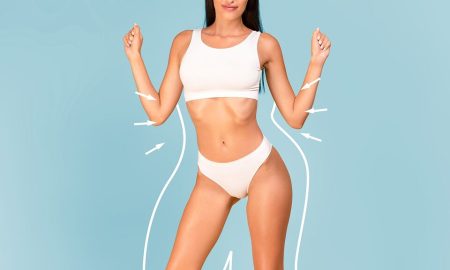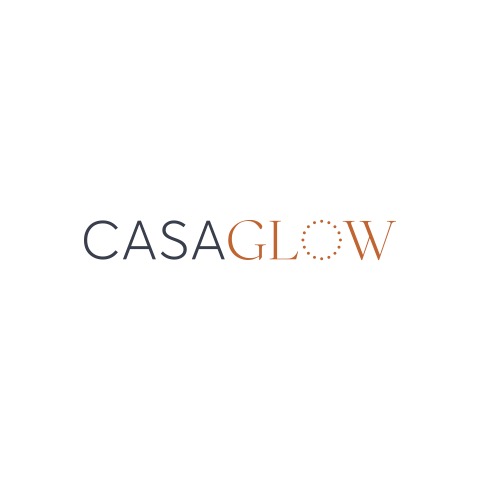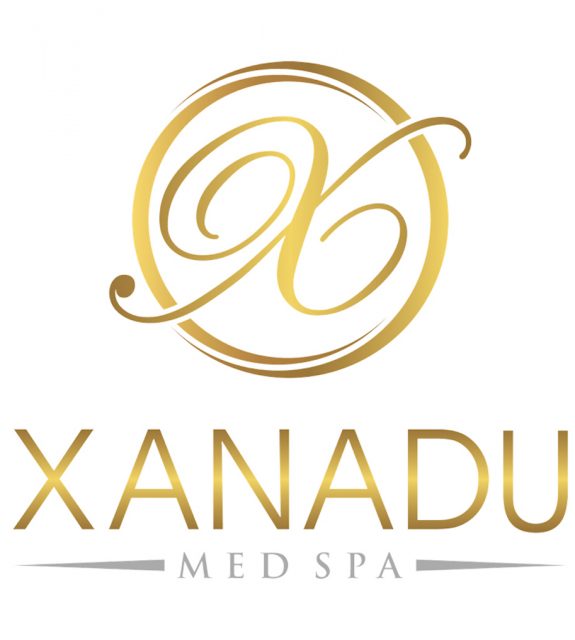
In the ever-evolving field of medicine, groundbreaking discoveries and innovative devices emerge on a daily basis. With medical experts dedicating their time to advancing existing instruments and equipment, we at Haute Beauty were intrigued to explore what our own experts would envision if given the opportunity to create a new medical instrument or device. Here is what they shared:
Dr. Viraj J. Mehta | Eyelid Surgery, Oculoplastic | DMV
As an Oculofacial surgeon, my focus is exclusively on the eyes and face. The biggest complaint patients bring to me are the signs of aging with fine lines and loose/sagging skin. I would create a new device that takes the best of radiofrequency and ultrasound technologies. These would be directed into the various layers of the skin, from superficial to deep. It would help contract tissue to tighten sagging and excess skin, while stimulating new collagen production to create a lasting lift. It would be gentle enough to use around the eyelids, but powerful enough to use on the entire face and potentially delay or even replace a facelift.
For more information, visit Dr. Mehta's website, Instagram, or Facebook!
Dr. Daisy Ayim | Body | Houston
The medical device that perks my interest is an appetite controller that basically programs when to trigger the desire to eat. It will be an electrode or pasty-like device that controls the time someone can eat or not. Think of it as a hunger alarm clock that takes away all desires or cravings for food and replaces it with programmable consumption time. This device is controlled with an app or handheld remote. I feel this device will replace all synthetic medications for weight loss and provide a sustainable solution. The best part is the device has no side effects and a high compliance rate due to phenomenal results.
For more information, visit Dr. Ayim's website, Instagram, or Facebook!
Dr. Sam Rizk | Face | Manhattan, NY
I am always searching for new techniques and technologies to ensure my patients have completely natural results with as little scarring as possible—especially during the deep plane facelift procedure. The invention of tissue glue is a great example. It has completely replaced the need for a post-surgical drain and really expedites recovery and reduces scarring.
Personally, I'd like to design a light retractor that's longer and narrower than what's currently available. The light retractor is one of the most important instruments used during the platysmaplasty, which is the neck lift portion of the deep plane facelift. It lights the way as I separate the neck tissue in preparation for tightening, but it only allows me to go so far down into the neck. If I had one that was longer and narrower, I'd be able to get closer to the base of the neck—allowing us to tighten from the bottom up. Because the neck supports the lower muscles of the face, this one small tweak would revolutionize the entire deep plane facelift procedure.
For more information, visit Dr. Rizk's website, Instagram, or Facebook!
Dr. Steven Victor | Regenerative Medicine | New York, NY
I would want to create a device that revolutionizes the process of fat removal and aesthetic injections for patients. My vision entails a device that simplifies the procedure, enabling the efficient removal of fat from one area of the body and seamless injection into another, all within a single device. Reliability and reproducibility are also very important. Presently, the process of fat removal and aesthetic injections involves a complex and time-consuming two-step procedure.
For more information, visit Dr. Victor's website, Instagram, or Facebook!
Dr. Paul Durand, Careaga Plastic Surgery | Body | Miami, FL
I envision a revolutionary medical instrument that offers a non-surgical solution for rectus diastasis, a condition characterized by abdominal muscle separation. Currently, the primary treatment option for significant rectus diastasis involves suturing the muscles together, which is suitable for patients requiring a tummy tuck and with concurrent skin excess. However, for individuals without excess skin who may otherwise be ideal candidates for liposuction, an innovative non-surgical approach would be truly transformative.
For more information, visit Careaga Plastic Surgery's website, Instagram, or Facebook!
Dr. Jay Arora | Vision | Scottsdale, AZ
The most critical medical device in the field of ophthalmology would be aimed at repairing/enhancing retinal tissue. The retina sits at the back of the eye and is composed of optic nerve fibers, which are absolutely critical to our ability to transform visual stimuli into perceived images. Once retinal tissue is destroyed (from diabetes, hypertension, macular degeneration, genetic diseases, etc), the damage is irreversible and permanent blindness is a highly likely outcome. An implantable retinal microchip (hello conspiracy theories) could store these visual stimuli as electrical signals, which could then be transferred to the brain in order to recreate images and restore sight to a once blind eye!
For more information, visit Dr. Arora's website, Instagram, or Facebook!
Dr. Brian K. Machida | Face | Los Angeles
In the process of performing a facelift, a major concern is the proximity of nerves to the surgical instruments. Surgeons rely on their knowledge of anatomy as it relates to the surgical technique they are using. Nerve testing and probes are available to test specific nerve structures for identification. It would be amazing to develop an instrument that can dissect tissue as well as warn of proximity to nerves so these structures can be avoided.
For more information, visit Dr. Machida's website, Instagram, or Facebook!
Dr. Jeffrey Lee | Breast | Boston
Something that is missing in the aesthetic world is a neuromodulator like Botox, but would have the additional characteristics that would include lasting greater than 6 months and would also be reversible. Hyaluronic acid-based fillers such as Juvederm have a great reversing agent called hyaluronidase. If you dislike your filler treatment, your provider can dissolve the filler and make it go away.
Unfortunately, Botox is not reversible and so if there is an unexpected or undesirable result, you have to wait until it goes away which can be months. I would love to have the ability to be able to inject a similar reversal agent and undo the effects of Botox. New neuromodulators are coming out with longer durations but if you don’t like your treatment for any reason, you have to wait it out and this could mean a lot longer timeframes if the product lasts a long time.
For more information, visit Dr. Lee's website, Instagram, or Facebook!
Dr. Peter Andrade, Beautique Concierge | Medical Spa | Brooklyn, NY
Simple, I would invent cordless operating instruments at an affordable price. I feel like I’m always tethered to instruments in the operating room (OR). For example, we use electrocautery in the OR in the shape of a pencil. This instrument has a long cable attached to it that is cumbersome and often gets tangled with other cords making the operation a bit more laborious than it needs to be.
I would also invent a portable CO2 laser that I can take with me on my concierge home visits! The lasers we have now are large and bulky prohibiting any use of them in the concierge space.
For more information, visit Beautique Concierge's website, Instagram, or Facebook!
Dr. Jeffrey Lisiecki | Nose | New York
I can think of a few that I would like to invent! One thing that would really be revolutionary is a device that could tighten the deeper tissues and ligamentous structures of the face. All of the skin tightening in the world will never truly replace a facelift, because facial aging causes laxity in deeper tissue layers of the face. Any device that could tighten those structures would approach surgical results in facial rejuvenation.
For more information, visit Dr. Lisiecki's website, Instagram, or Facebook!
Dr. Husam Almunajed | Smile | New York, NY
For dentistry, an app that explains to patients and the general public what the profession of dentistry involves. From our many consults, we have noticed that there are many misconceptions about treatments, and people need to be educated about these important decisions in their care.
Unfortunately, there are many differences among dentists' abilities, skills, and the products that dentists use in their offices. There is really no regulation, and many patients believe an implant is an implant, a crown is a crown. When a potential patient calls the office and asks how much is a crown and is given a quote, and calls another office and asks for another quote - picking the cheapest crown is not necessarily the best choice.
Many times, there is a reason why a crown may have a different price. It can be how the crown is made, it can be a natural-looking handmade crown, or it can be a machine-pressed monochromatic crown that many times does not look like a tooth. Also, is the dentist trained to provide minimal invasive restorations, or is the dentist only trained to shape teeth into pegs - as seen on social media? The right question is how is my potential dentist trained.
The same applies to dental implants, as the market has recently seen an explosion of dental implant companies and many providers who provide implant solutions that are at many quality levels. There is a reason we are seeing a large number of dental implant failures. An app that can educate the public about dentistry would be amazing so patients can make educated correct choices for the type of care they want.
For more information, visit Dr. Almunajed's website, Instagram, or Facebook!
Dr. Alton Ingram | Body | Nashville, TN
Having helped thousands of patients go through surgery and the recovery process in the last few decades, I have always looked for ways to help them recover more rapidly and with as few complications as possible. A new technology called “Tissue Regeneration Stimulation” is currently under development in a number of university medical centers. This technology will ultimately result in a biocompatible implant that emits safe, low-level electromagnetic fields to stimulate the body's own regenerative processes.
In a cosmetic or reconstructive plastic surgery context, a TRS device could aid in restructuring and rejuvenating skin, muscles, or fatty tissues post-surgery, reducing scarring and accelerating recovery. The device, once implanted post-procedure, would be programmed to optimize tissue healing, using smart sensors to monitor the recovery process and adapt the stimulatory signals accordingly. The TRS could help improve results in procedures like facelifts, breast augmentations, or liposuctions, contributing to more natural and desirable outcomes.
I wish that I had the time and resources to work on the development of a device like this which would be of such universal utility, but I’m afraid that I am going to have to wait for someone else to refine this technology...but like they say on Shark Tank, I will definitely be a buyer when someone does!
For more information, visit Dr. Ingram's website, Instagram, or Facebook!






















